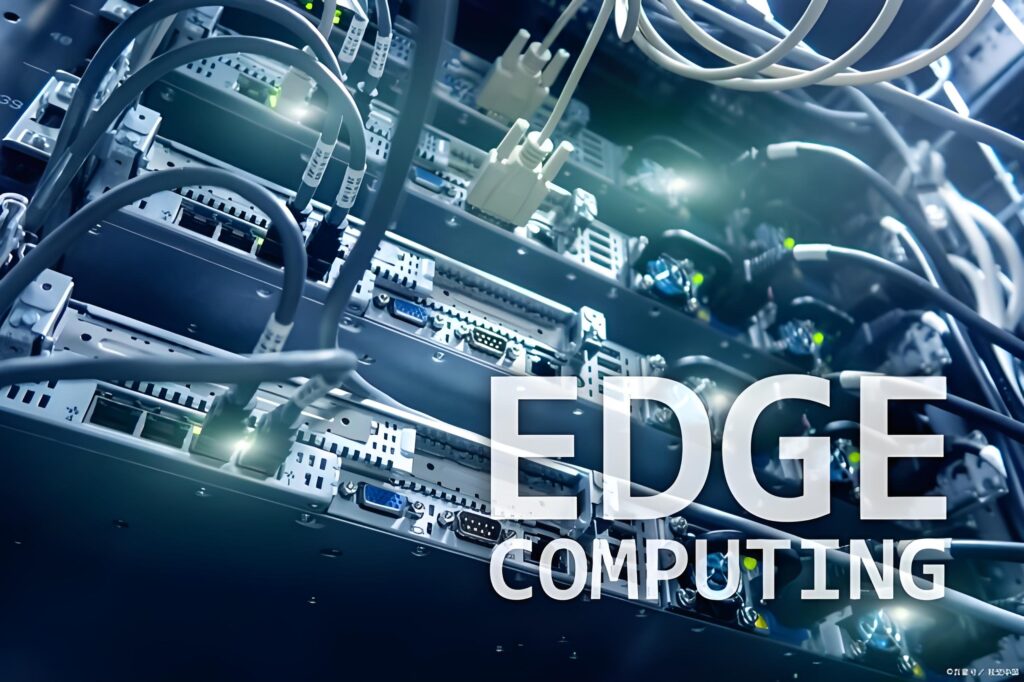As industries become increasingly digitized, the demand for real-time data processing, low latency communication, and secure operations has grown exponentially. Traditional cloud computing models, which depend heavily on centralized servers, often struggle to meet these demands, especially in remote or mission-critical environments. This is where edge computing steps in. By processing data closer to the source, edge computing reduces latency, enhances reliability, and minimizes bandwidth usage.
In this blog, we’ll explore how edge computing empowers Industrial IoT (IIoT) applications to become faster, more cost-effective, and scalable—ultimately transforming the way industries operate.
Table of contents
Why Edge Computing Matters in Industrial IoT
Industries are under pressure to increase operational efficiency while managing costs and maintaining safety. Edge computing offers three primary advantages that make it indispensable in IIoT environments:
- Bandwidth Reduction: By processing and filtering data locally, it minimizes the amount of data sent to the cloud. This helps reduce bandwidth costs and congestion, especially when dealing with high-volume sensor or video data.
- Real-Time Response: For applications like equipment failure prediction, anomaly detection, or automated control, milliseconds matter. It ensures data can be analyzed and acted upon instantly.
- Improved Security: Keeping sensitive data local reduces the risk of exposure during transmission and allows organizations to apply robust on-premises security controls.

Edge Applications Across Industrial Sectors
Since edge computing is not a one-size-fits-all approach. It supports a wide range of use cases across different sectors:
- Power Grids: Real-time fault detection and predictive maintenance for substations and transmission towers, especially in rural or mountainous areas where connectivity is unreliable.
- Smart Buildings: Integration with HVAC systems and lighting control to improve energy efficiency based on occupancy and environmental data.
- Telecom and Data Centers: Monitoring indoor telecom cabinets or edge data centers for temperature, humidity, intrusion, and smoke to ensure uninterrupted service.
- Agriculture: Edge gateways process data from sensors measuring soil conditions, weather, and equipment usage to support precision farming.
- Transportation and Logistics: AI-powered edge gateways manage autonomous guided vehicles (AGVs) and analyze video streams for traffic and cargo monitoring.
Edge Computing in Remote or Harsh Environments
Many industrial sites operate in extreme conditions, from offshore wind farms to isolated substations in the mountains. Edge computing excels in these scenarios by offering:
- Offline Operation: With local storage and intelligence, devices can continue to function and store critical data even when disconnected from the network.
- Autonomous Decision-Making: Rules and AI models can run locally, ensuring immediate responses to hazardous events such as overheating, intrusion, or structural tilt.
- Reliable Connectivity Options: Edge gateways often support multiple communication methods including 4G/5G, LoRa, satellite, and mesh networks to ensure data delivery in challenging locations.
Edge vs. Cloud: Finding the Right Balance
As edge and cloud computing are not mutually exclusive. In fact, a hybrid approach often yields the best results. While edge handles time-sensitive and high-frequency data processing, the cloud remains essential for long-term storage, global data access, and advanced analytics.
Organizations can benefit by using it for immediate actions and leveraging the cloud for strategic decisions and predictive modeling.
Conclusion
Edge computing is no longer just a buzzword—it’s a foundational technology for the next generation of industrial systems. As businesses push toward digital transformation and greater autonomy, deploying intelligent edge infrastructure will be essential for scaling operations efficiently and securely.
TruGem’s edge solutions exemplify how combining rugged hardware, protocol versatility, and real-time processing power can help industries build a smarter, more responsive future.
FAQs
Edge computing processes data locally at the device or gateway level, enabling real-time analysis and faster decision-making. In contrast, cloud computing centralizes data processing, which can introduce latency—especially problematic in time-sensitive industrial scenarios.
By minimizing data transmission to the cloud, edge computing reduces bandwidth usage and cloud service fees. It also lowers downtime by enabling faster fault detection and localized responses, which saves on maintenance and operational disruptions.
Yes. it enhances security by limiting data exposure during transmission and enabling on-site encryption and access control. Many edge devices also support VPNs, firewalls, and role-based access to meet industry cybersecurity standards.
Absolutely. Industrial-grade edge gateways are built to withstand extreme temperatures, humidity, and vibrations. With multiple connectivity options like 5G, LoRa, and satellite, they enable reliable performance even in isolated or rugged sites.
